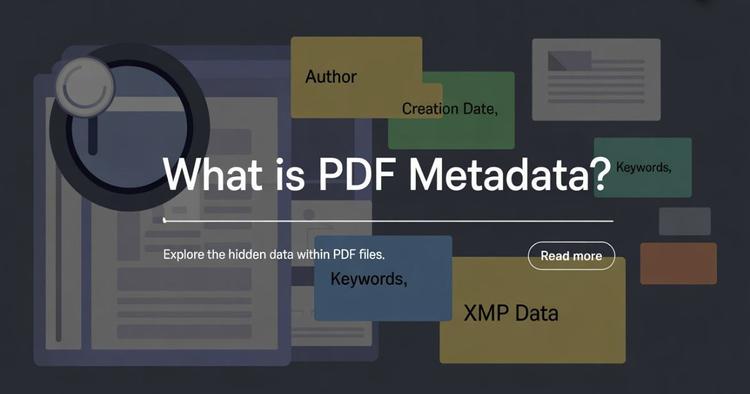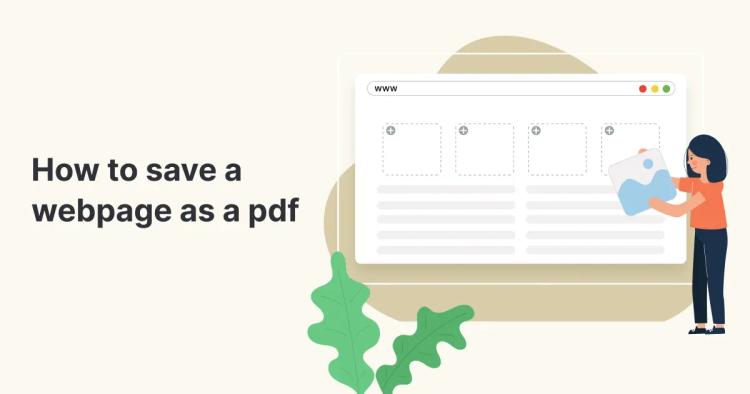In the ever-evolving landscape of technology, Optical Character Recognition (OCR) stands out as a crucial tool that has transformed the way businesses handle documents. At its core, OCR is a sophisticated technology that enables machines to recognize and interpret printed or handwritten text, turning it into editable and searchable data.
This revolutionary capability has paved the way for businesses to digitize their documents, significantly enhancing efficiency and productivity across various operations.
What is OCR and How Does It Work?
To grasp the essence of OCR, it's essential to delve into its inner workings. OCR employs advanced algorithms to analyze images containing text, identifying patterns and shapes that correspond to letters, numbers, and symbols.
Through a series of processes such as segmentation, feature extraction, and pattern recognition, OCR meticulously translates visual data into machine-readable text. This transformative process enables computers to comprehend and manipulate textual information, bridging the gap between physical documents and digital databases.
ᴀᴅᴠᴇʀᴛɪsᴇᴍᴇɴᴛEvolution of OCR Technology
The journey of OCR technology spans several decades, marked by continuous innovation and refinement. Initially developed in the mid-20th century, early OCR systems were rudimentary and limited in their capabilities. However, with the advent of more powerful computing resources and breakthroughs in machine learning algorithms, OCR has undergone a remarkable evolution.
Modern OCR solutions boast unprecedented accuracy rates, handling complex fonts, languages, and document layouts with remarkable precision. This evolution has propelled OCR into a cornerstone technology for businesses seeking to digitize and streamline their document management processes.
Benefits of Implementing OCR in Business Operations
The adoption of OCR offers a myriad of benefits that can significantly enhance business operations. By digitizing documents and converting them into searchable text, OCR eliminates the need for manual data entry, saving valuable time and resources.
Moreover, OCR enhances accessibility by enabling users to quickly retrieve and reference information from vast document repositories. Additionally, OCR streamlines workflows by automating document processing tasks, reducing errors and improving overall efficiency.
These advantages make OCR indispensable for businesses looking to optimize their document management practices and gain a competitive edge in today's digital economy.
ᴀᴅᴠᴇʀᴛɪsᴇᴍᴇɴᴛEnhancing Document Management with OCR
Document management lies at the heart of every organization, encompassing the creation, storage, retrieval, and distribution of information. With OCR, businesses can revolutionize document management practices by digitizing paper-based documents and organizing them into structured databases.
This digitization process not only saves physical storage space but also enhances accessibility and searchability. Furthermore, OCR enables automatic indexing and categorization of documents, making it easier to locate specific information efficiently.
By centralizing document management with OCR, businesses can streamline workflows, improve collaboration, and ensure compliance with regulatory requirements.
Streamlining Data Entry Processes Using OCR
Data entry is a labor-intensive task that often consumes significant time and resources, leading to inefficiencies and errors. However, with OCR, businesses can automate and streamline data entry processes, accelerating productivity and reducing human error.
By scanning and digitizing paper documents, OCR extracts text and numerical data, eliminating the need for manual transcription. This automated data entry not only saves time but also improves accuracy, ensuring that information is captured correctly the first time.
Whether it's processing invoices, forms, or customer records, OCR empowers businesses to achieve greater efficiency and accuracy in their data entry operations.
Improving Accuracy and Efficiency with OCR
Accuracy and efficiency are paramount in today's fast-paced business environment, where every second counts. OCR plays a pivotal role in enhancing both aspects by automating tedious manual tasks and minimizing the risk of errors.
By leveraging advanced image processing techniques and machine learning algorithms, OCR can accurately recognize and extract text from a wide range of document types, including scanned images and PDF files.
This high level of accuracy not only improves data quality but also accelerates document processing times, enabling businesses to operate more efficiently and effectively. Whether it's digitizing archives, processing customer inquiries, or extracting information from contracts, OCR empowers businesses to achieve new levels of accuracy and efficiency.
ᴀᴅᴠᴇʀᴛɪsᴇᴍᴇɴᴛOCR Applications Across Industries
The versatility of OCR extends across various industries, revolutionizing processes and unlocking new opportunities for innovation. In the healthcare sector, OCR facilitates the digitization of patient records, enabling healthcare providers to access critical information quickly and securely.
In finance and banking, OCR automates document processing tasks such as invoice processing, loan applications, and KYC (Know Your Customer) verification, reducing processing times and enhancing compliance. Similarly, in the legal industry, OCR streamlines the discovery process by digitizing and indexing case files, making it easier for legal professionals to access and analyze relevant information.
From retail to manufacturing, logistics to education, OCR is transforming business operations across diverse sectors, driving efficiency, and accelerating digital transformation.
Integrating OCR with Existing Systems and Software
Integration is key to maximizing the benefits of OCR within an organization's existing infrastructure. Whether it's an enterprise content management system, a customer relationship management platform, or a document collaboration tool, OCR can be seamlessly integrated to enhance functionality and efficiency.
By leveraging APIs (Application Programming Interfaces) and SDKs (Software Development Kits), businesses can integrate OCR capabilities directly into their existing software applications, enabling automated document processing and data extraction.
This integration streamlines workflows, reduces manual intervention, and ensures seamless interoperability across different systems and processes.
Overcoming Challenges and Limitations of OCR
While OCR offers tremendous benefits, it's not without its challenges and limitations. One of the primary challenges is achieving high accuracy rates, especially when dealing with poor-quality images or handwritten text. Additionally, OCR may struggle with complex document layouts, non-standard fonts, and languages with unique characters or scripts.
Furthermore, ensuring data privacy and security is paramount, particularly when processing sensitive information such as personal or financial data. Despite these challenges, ongoing advancements in OCR technology, coupled with meticulous data preprocessing techniques, are gradually overcoming these limitations, making OCR more robust and reliable than ever before.
Factors to Consider When Choosing an OCR Solution
Selecting the right OCR solution is a critical decision that can significantly impact the success of your document management initiatives. Several factors must be considered, including accuracy, scalability, compatibility, and ease of integration.
It's essential to evaluate the OCR solution's performance across different document types and languages, ensuring that it meets your specific requirements. Additionally, consider the vendor's reputation, support services, and pricing model to ensure a seamless implementation and ongoing support.
By conducting thorough research and assessing your organization's needs, you can choose an OCR solution that aligns with your business objectives and delivers tangible results.
ᴀᴅᴠᴇʀᴛɪsᴇᴍᴇɴᴛCase Studies: Successful Implementations of OCR
Real-world examples demonstrate the transformative power of OCR in enhancing business operations and driving tangible outcomes. Take, for instance, a global logistics company that implemented OCR to automate the processing of shipping documents.
By digitizing and extracting data from invoices, bills of lading, and customs forms, the company streamlined its operations, reduced processing times, and improved accuracy.
Similarly, a healthcare provider leveraged OCR to digitize patient records, enabling clinicians to access medical histories and treatment plans with ease, leading to better patient outcomes and improved efficiency.
These case studies underscore the immense potential of OCR to revolutionize workflows and unlock new opportunities for innovation across diverse industries.
Future Trends in OCR Technology
As technology continues to evolve at a rapid pace, the future of OCR holds exciting possibilities and innovations. One emerging trend is the integration of artificial intelligence (AI) and machine learning algorithms to further enhance OCR accuracy and performance.
These advanced algorithms can adapt and learn from data, improving recognition accuracy, especially for handwritten text and complex document layouts. Moreover, cloud-based OCR solutions are gaining popularity for their scalability, flexibility, and ease of deployment.
Additionally, mobile OCR applications are becoming increasingly prevalent, enabling users to capture and process text directly from their smartphones or tablets. This mobile-centric approach empowers field workers, sales teams, and remote employees to digitize documents and access critical information anytime, anywhere.
Unlock OCR's true potential with our OCR PDF tool—upload scans, extract text accurately, and make documents searchable and editable. Try it now to streamline your workflow.
FAQs
What is OCR?
OCR stands for Optical Character Recognition. It is a technology that allows machines to recognize and interpret text from scanned documents or images, converting it into editable and searchable data.
When do we use OCR?
OCR is used whenever there is a need to extract text or data from physical documents or images quickly and accurately. Common use cases include digitizing paper documents, automating data entry processes, and enhancing document management practices.
How can OCR benefit my business?
OCR can benefit your business by streamlining document-related processes, reducing manual data entry efforts, improving accuracy, and enhancing accessibility to information. It enables efficient digitization of documents, leading to increased productivity and cost savings.
What is OCR scanning?
OCR scanning refers to the process of using OCR technology to scan and convert printed or handwritten text from physical documents or images into digital format. This allows for easier storage, retrieval, and manipulation of textual data.
What is OCR software?
OCR software is a type of application or tool that utilizes OCR technology to recognize and extract text from scanned documents or images. It often includes features for document conversion, text recognition, and data extraction.
What is OCR technology?
OCR technology refers to the set of algorithms, techniques, and processes used to recognize and extract text from images or scanned documents. It involves image processing, pattern recognition, and machine learning algorithms to achieve accurate text recognition and conversion.
ᴀᴅᴠᴇʀᴛɪsᴇᴍᴇɴᴛConclusion
In conclusion, Optical Character Recognition (OCR) is a transformative technology that has revolutionized the way businesses handle documents. From streamlining data entry processes to enhancing document management practices, OCR offers a myriad of benefits for improving efficiency, accuracy, and productivity.
As businesses navigate the digital landscape, integrating OCR into their operations is essential for staying competitive and unlocking new opportunities for innovation.







